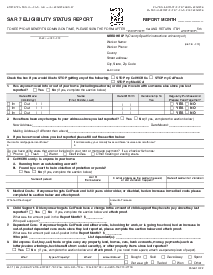-
Templates
1099 FormsAccurately report 1099 information returns and ensure IRS filing with easeExplore all templatesW-9 W-8 FormsEasily manage and share taxpayer details to streamline payments and meet IRS requirements with confidenceExplore all templatesOther Tax FormsFillable tax forms simplify and speed up your tax filing process and aid with recordkeeping.Explore all templatesReal EstateReal estate templates for all cases, from sale to rentals, save you a lot of time and effort.Explore all templatesLogisticsSimplify your trucking and logistics paperwork with our ready-to-use transportation and freight templates.Explore all templatesMedicalMedical forms help you keep patient documentation organized and secure.Explore all templatesBill of SaleBill of Sale templates streamline the transfer of ownership with clarity and protection.Explore all templatesContractsVarious contract templates ensure efficient and clear legal transactions.Explore all templatesEducationEducational forms and templates enhance the learning experience and student management.Explore all templates
-
Features
FeaturesAI-Enhanced Document Solutions for Contractor-Client Success and IRS ComplianceExplore all featuresAI Summarizer Check out the featureAI PDF summarizer makes your document workflow even faster. Ask AI to summarize PDF, assist you with tax forms, complete assignments, and more using just one tool.Sign PDF Check out the featurePDFLiner gives the opportunity to sign documents online, save them, send at once by email or print. Register now, upload your document and e-sign it onlineFill Out PDF Check out the featurePDFLiner provides different tools for filling in PDF forms. All you need is to register, upload the necessary document and start filling it out.Draw on a PDF Check out the featureDraw lines, circles, and other drawings on PDF using tools of PDFLiner online. Streamline your document editing process, speeding up your productivity
- Solutions
- Features
- Blog
- Support
- Pricing
- Log in
- Sign Up
SUM-100 Summons
Get your SUM-100 Summons in 3 easy steps
-
01 Fill and edit template
-
02 Sign it online
-
03 Export or print immediately
What is the Summons (SUM-100)

The California Judicial Council Form SUM-100, commonly known as the "Summons," is a crucial legal document that marks the beginning of a lawsuit. It serves as the initial notification to a defendant, indicating they are being sued. The primary role of this form is to ensure the defendant is fully aware of the legal action against them and the necessity for them to respond. The SUM-100 form outlines the required steps and deadline for the defendant's response, which is critical for the legal process to proceed fairly and efficiently..
Responding to a Lawsuit
When a defendant receives a summons (SUM-100 form), it's crucial to respond within the typical 30-day timeframe to avoid a default judgment, which can occur if there's no response. The response must be a formal written document, often an 'Answer' or a 'Demurrer,' disputing or admitting to the allegations, or a 'Motion to Strike,' challenging specific parts of the lawsuit.
It's essential to file this response with the court and serve a copy to the plaintiff or their attorney. The type of response depends on the case specifics and legal strategy. For detailed guidance, consulting a legal professional is recommended.
How to Complete Sum-100 Form
To fill out the California Judicial Council Form SUM-100, follow these steps:
- Identify the Parties: Enter the plaintiff's and defendant's names as listed in the complaint.
- Case Number: Fill in the case number as assigned by the court.
- Court Information: Provide the name and address of the court where the lawsuit is filed.
- Response Instructions: Read the section outlining how to respond to the lawsuit.
- Notice to Defendant: This area contains a warning to the defendant about the need to respond.
- Date, Seal, and Signature: The form is dated and signed by the court clerk, with the court's seal.
Please note, this is a general guide. For specific legal advice and instructions, consult with a legal professional or the court.
Consequences of Non-Response
Failing to respond to a summons within the given timeframe, typically 30 days, can lead to significant legal consequences for the defendant. If the defendant does not file a response, the court may issue a default judgment against them. This means the plaintiff may automatically win the case, and the court could grant the plaintiff the relief they seek, such as monetary damages or other court orders, without hearing the defendant's side.
This default judgment is enforceable, and the defendant loses the opportunity to dispute the allegations or present their case. Therefore, timely response is crucial to protect one's legal rights and interests.
Fillable online SUM-100 Summons


































































